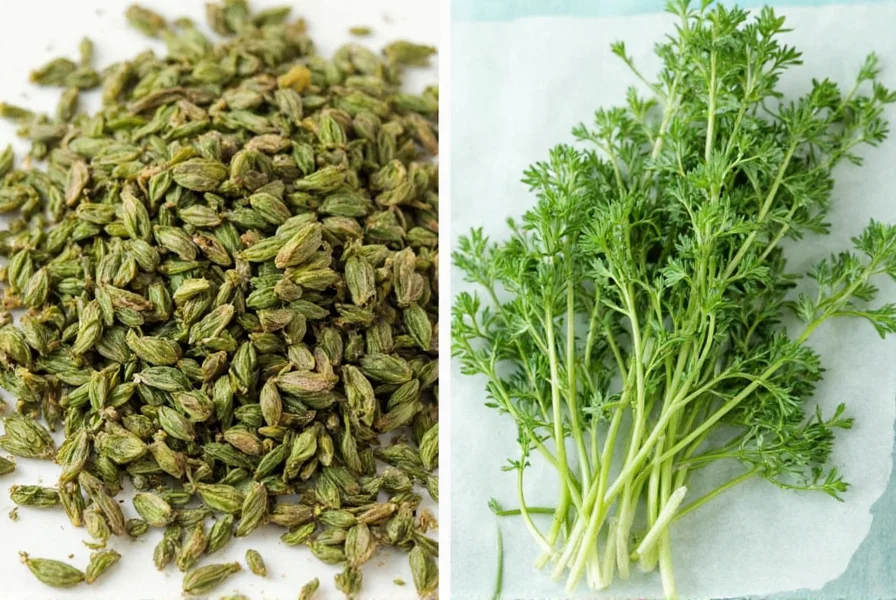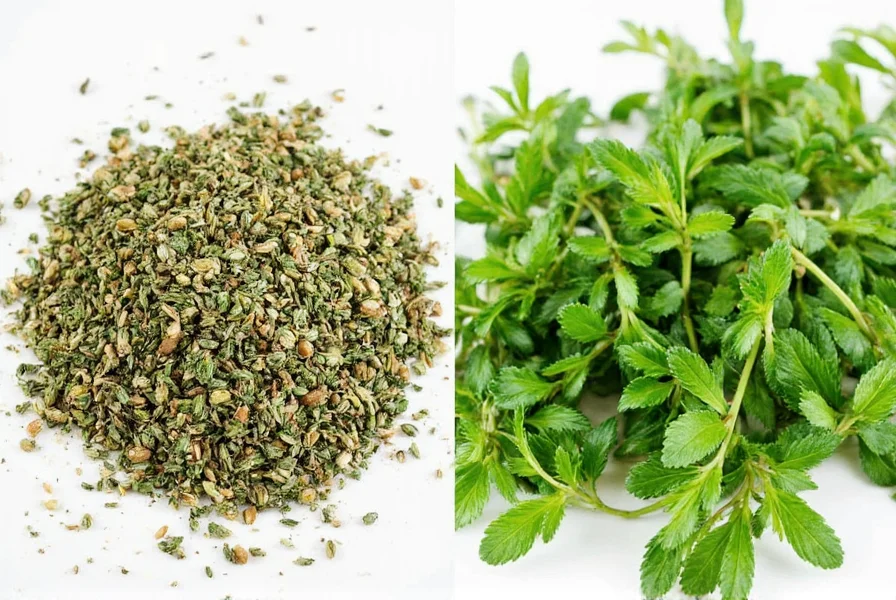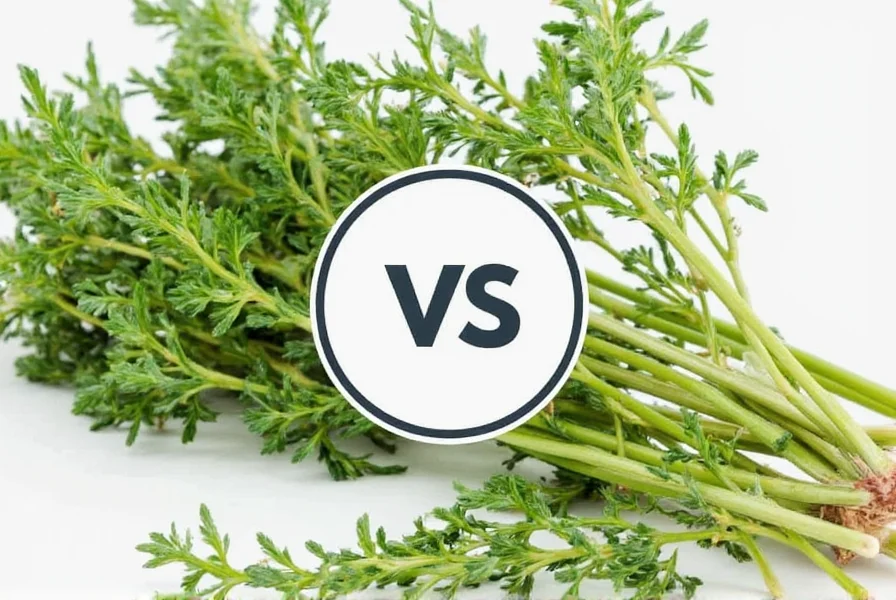If you're searching for the key differences between dried and fresh tarragon, the answer is straightforward: fresh tarragon delivers vibrant, sharp flavor ideal for raw applications, while dried tarragon offers milder, earthier notes best suited for cooked dishes. Fresh tarragon loses potency quickly but shines in sauces and salads, while dried tarragon provides longer shelf life and works well in slow-cooked recipes. Here's a detailed breakdown of when to use each form, storage tips, and substitution guidelines.
| Characteristic | Fresh Tarragon | Dried Tarragon |
|---|---|---|
| Aroma | Strong, grassy, aromatic | Mild, earthier |
| Flavor Intensity | High, vibrant, sharp | Mellowed, less pronounced |
| Texture | Tender leaves, juicy stems | Brittle, crumbly |
| Best Use | Raw dishes, finishing touches | Cooking, slow simmering |
| Shelf Life | 3–5 days refrigerated | 6 months to 1 year sealed |
Usage Tips & Best Recipes
When to Use Fresh Tarragon
- Sauces: Classic French sauces like béarnaise or tartar benefit greatly from a splash of fresh tarragon.
- Salads: Chop and toss into green salads or potato salads for a bright finish.
- Herb Butter: Blend with softened butter and spread on grilled fish or steak.
- Infused Vinegar: Steep sprigs in white wine vinegar for a tangy, herby condiment.

When to Use Dried Tarragon
- Slow-Cooked Stews: Adds depth without overpowering the broth or sauce.
- Rubbed Meats: Mix into spice blends for roasted chicken or pork.
- Dry Marinades: Great for seasoning before long baking or roasting sessions.
- Herb Salts: Combine with coarse sea salt for a versatile kitchen staple.

Storage Secrets: How to Keep It Fresh (Or Last)
Storing Fresh Tarragon
- Refrigerator Method: Wrap the bunch in a damp paper towel and place in a resealable plastic bag. Keep in the vegetable drawer for up to 5 days.
- Water Glass Method: Place the stems in a glass of water like a bouquet, cover loosely with a plastic bag, and keep in the fridge.
- Freezing: Chop and freeze in ice cube trays with olive oil or water for easy portioning.

Storing Dried Tarragon
- Airtight Containers: Store in a sealed glass jar or tin away from light, heat, and moisture.
- Dark Cabinet: Light exposure speeds up flavor loss—keep your herbs in a cool, dark place.
- Vacuum Sealing: For long-term bulk storage, vacuum-sealed bags are ideal.

Buying Guide: What to Look For
Choosing Fresh Tarragon
- Look for Vibrant Green Leaves: Avoid yellowing or wilted bunches.
- Check the Stems: They should feel firm, not slimy or overly soft.
- Smell Test: Fresh tarragon has a strong, pleasant aroma—if it smells musty or dull, skip it.
Choosing Dried Tarragon
- Color Retention: Good quality dried tarragon retains a deep green color—not brown or faded.
- Minimal Crumbling: While some crumbling is normal, avoid overly powdery products as they may lack flavor.
- Whole Leaf vs. Ground: Whole dried leaves preserve more flavor than ground versions.
Frequently Asked Questions
Can I substitute dried tarragon for fresh in recipes?
Yes, but with adjustments. The general rule is to use one-third the amount of dried tarragon compared to fresh, as dried herbs are more concentrated. So if a recipe calls for 1 tablespoon of fresh tarragon, use 1 teaspoon of dried instead. Remember that dried tarragon has a milder flavor profile, so you might need to adjust to taste.
Why does my dried tarragon taste different from fresh?
Drying tarragon causes the volatile oils responsible for its signature anise-like flavor to dissipate. Fresh tarragon has a vibrant, sharp flavor with grassy notes, while dried tarragon develops a more earthy, mellow profile. This is why fresh tarragon is preferred for raw applications, while dried works better in cooked dishes.
How long does fresh tarragon last in the refrigerator?
Properly stored fresh tarragon (wrapped in a damp paper towel in a resealable bag or standing in water like a bouquet) will last 3-5 days in the refrigerator. For longer storage, consider freezing chopped tarragon in ice cube trays with oil or water.
Does dried tarragon go bad?
Dried tarragon doesn't technically "go bad" but loses potency over time. Properly stored in an airtight container away from light and moisture, dried tarragon maintains good flavor for 6-12 months. After that, it becomes increasingly mild. To test if it's still good, rub a pinch between your fingers - if the aroma is weak, it's time to replace it.
Can I use dried tarragon in salad dressings?
While fresh tarragon is ideal for salad dressings due to its vibrant flavor, dried tarragon can work if rehydrated properly. Try steeping 1/4 teaspoon of dried tarragon in 1 tablespoon of warm vinegar for 10-15 minutes before adding to your dressing. This helps release more flavor compounds than simply sprinkling the dried herb directly into cold dressing.
Which dishes absolutely require fresh tarragon?
Dishes where tarragon's flavor is meant to shine as a primary component typically require fresh tarragon. This includes béarnaise sauce, tartar sauce, herb-infused vinegars, compound butters, and fresh salads. The bright, sharp notes of fresh tarragon get lost in long cooking processes, which is why it's best added at the end of cooking or used raw.
Conclusion
Whether you're team fresh or team dried, understanding the strengths of dried tarragon vs fresh tarragon lets you make smarter culinary choices. Fresh is king when it comes to raw applications and last-minute punches of flavor, while dried shines in slow-cooked dishes where subtlety is key. Remember, tarragon is a delicate herb—store it properly, use it wisely, and don't be afraid to experiment. Whether you grow your own or buy from a trusted supplier, a little tarragon goes a long way in bringing the essence of summer to your plate all year round.











 浙公网安备
33010002000092号
浙公网安备
33010002000092号 浙B2-20120091-4
浙B2-20120091-4